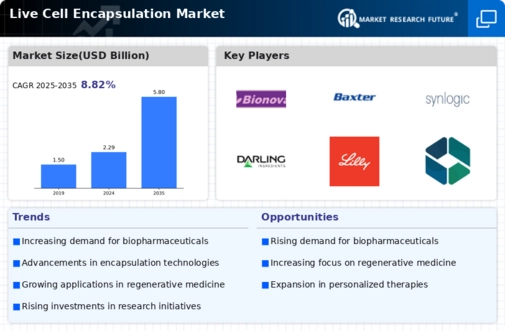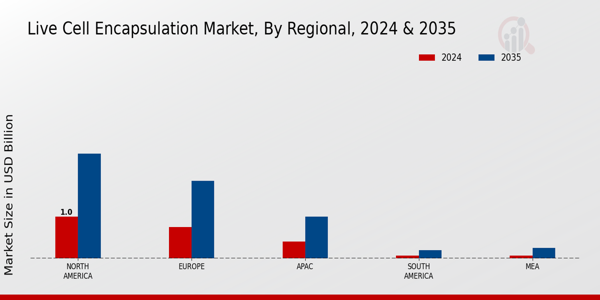Live Cell Encapsulation Size
Live Cell Encapsulation Market Growth Projections and Opportunities
Regenerative medicine is a major factor in Live Cell Encapsulation Market growth. Live cell encapsulation involves placing live cells in secure containers. This lets cells be transferred to repair or replace organs. As regenerative medicine grows, so does the demand for live cell packaging. This makes them crucial to the market. More individuals are experiencing chronic ailments including diabetes, neurological disorders, and autoimmune issues, driving the market. Live cell encapsulation might cure illnesses by transporting healthy cells to the afflicted regions, curing their causes, and boosting tissue repair. Better biomaterial and microencapsulation processes are driving the market's growth. Researchers and companies are exploring novel materials to make encapsulated cells more stable, biocompatible, and valuable. More effective live cell encapsulation therapies will result. Cell-based and specialty medicine are gaining popularity, changing the market. Live cell encapsulation allows patient-specific therapy. Live cell packaging technologies are growing because they match the customized treatment trend. Live cell packing allows transplantation without immunosuppression, a significant commercial consideration. Encapsulation shields donor cells from immune system assault. Rejection risk decreases. This enables novel organ transplants and cell therapies. Research and development money are constantly introduced. Pharmaceutical, scientific, and academic organizations are investing heavily in live cell packaging therapeutic research. This methodology uses research to develop new instruments and therapeutic procedures. In significant ways, live cell encapsulation controls diabetes. Encapsulated pancreatic islet cells may replace damaged or dysfunctional cells. This may fix diabetes. Diabetes is spreading worldwide, increasing the demand for live cell packing technology in this therapy. Market functioning depends on regulator support and clinical study start-up. Governments allow corporations to initiate clinical research as they learn about live cell encapsulation's advantages. Success in trials increases market confidence and adoption of these technologies. Biotech partnerships and collaborations affect the market. Companies build strategic collaborations to pool resources and expertise to develop and sell live cell encapsulating technology faster. These alliances broaden the market. The market is rising because more individuals are learning about and embracing novel treatments like live cell encapsulation. As they learn more about new treatments and how they may help, patients demand cutting-edge medications with improved outcomes and quality of life.















Leave a Comment